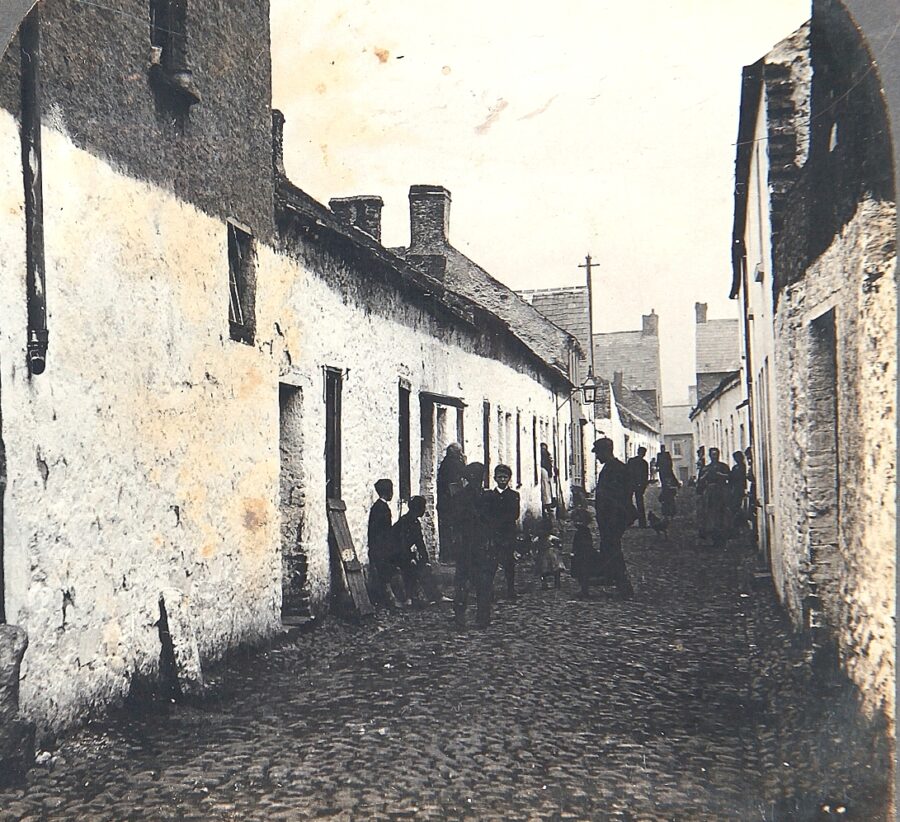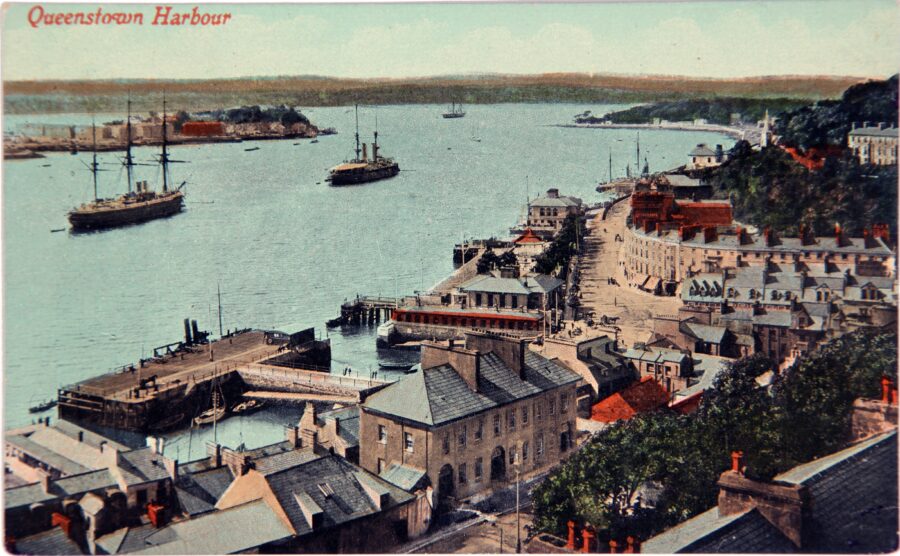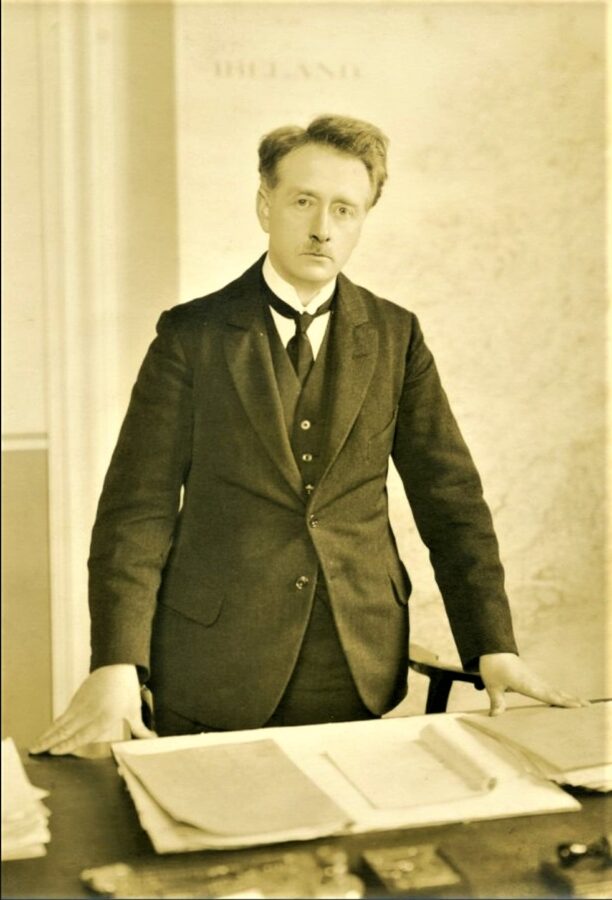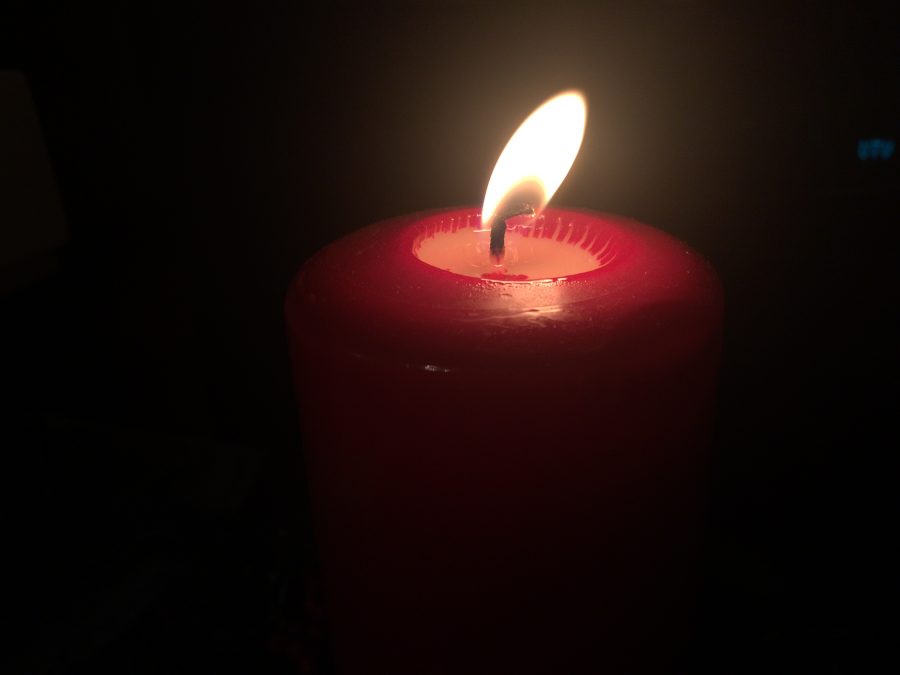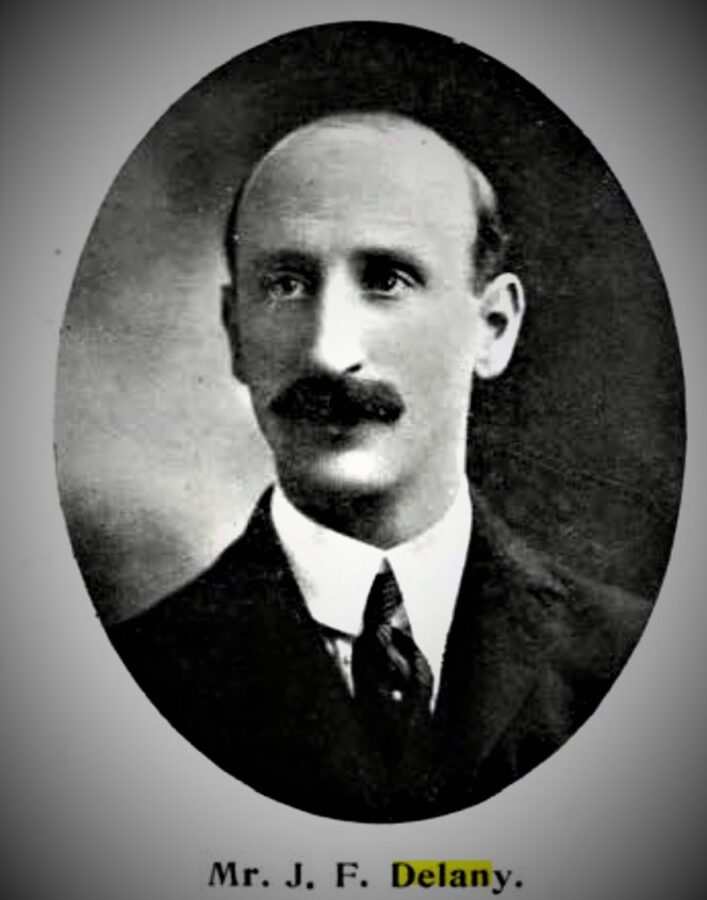Kieran’s Our City, Our Town Article,
Cork Independent, 22 December 2022
Journeys to an Irish Free State: Recasting the Southern Capital
Hidden amongst the multitude of news pieces in December 1922 in the Cork Examiner is an insightful, ambitious and detailed write-up on a lecture on town planning by Cork Corporation’s Joseph Delaney to Cork Chamber of Commerce. The main aim of the talk was the thinking through of the “future improvement and the better shaping of the city”.
It was perhaps serendipitous that the talk was almost published on the second anniversary of the Burning of Cork and also within days of the Irish Free State being formed – but all of the thoughts within the talk were to define the city’s development across the decades of the 1920s and 1930s and still echo somewhat in the current day.
Originally published in the Cork Examiner on 18 December 1922 (p.8), the article was written up in pamphlet form and can be viewed in the National Library, Dublin. In the report Joseph stresses that the urgent duty of Cork was to create a plan of city improvement and extension, develop it in gradual stages and put available financial resources to pursue such ideals, that coupled with a re-generating policy to modernise it.
According to Joseph, Cork was badly in need of the following public conveniences, utilities, and improvements. He lists a 26 point priority list of which housing and slum clearance are at the top of. He advocated for 2,500 houses on well-chosen sites, with roads, sewers, water supply, and light. What he described as the city’s “house congested jungles” should be cleared, narrow streets should be widened and house density should be reduced where there was excessive congestion.
Joseph called for the acquisition of derelict sites, which he called “form a chequer-board” on the map of the city. His vision was to lay them out as open spaces and recreation grounds – that coupled with at least two formal parks – one for the northern and one for the southern district of the city. He also envisaged a city stadium for “general sports, athletics, hors and agricultural shows, public competitions, galas, band promenades etc”. He called for new main drainage and sewage disposal schemes on “modern principles” of sanitary engineering be constructed.
An urban mobility plan was in Joseph’s top ten of priorities. He urged for a new and improved tram service and a pavement for 65 miles of roads and streets in a “most modern road surface treatment”, a new and improved tram service, complete with latest methods of public lighting. Public conveniences such as toilets, a new well equipped abattoir, and a new suitable cattle market, a new central fire station, a new city hall, and new market spaces for meat, provisions, vegetables and fish.
Joseph Delaney’s back story reveals a learned man. Arriving to Cork Corporation in 1903, Joseph amassed nineteen years’ experience within the organisation. Joseph was also interested in Irish industrial and language movements, in the country’s national well-being, its educational advancement and in economic reform.
W T Pike in his Contemporary biographies’, published in Cork and County Cork in the Twentieth Century by Richard J Hodges in 1911 reveals that Joseph (1872-1942) was educated at St Vincent’s College, Castleknock, Dublin. Joseph trained as engineer and architect by indentured pupilage under well-known Dublin architect Walter Glynn Doolin. Joseph became a certified surveyor under the London Metropolitan Building Act, combined with private study in the engineering courses of the Institution of Civil Engineers, and of the Institute of Municipal and County Engineers.
Joseph served on the temporary Civil Staff of the Royal Engineers and was Assistant City Architect in Dublin, for five years. In 1903, he was then appointed City Engineer of Cork. On taking up the Cork post he immediately set about improving the water supply system and reducing the abnormally high rate of water wastage in the city.
However, one of the many legacies Joseph left Cork City came from a visit to the US on an inquiry into American methods of municipal engineering and architectural practice, and an inspection of public works of civic utility. There he learned about the remodelling of American towns and cities to meet the modern requirements of their everyday life and that this was a common feature of civic pride in America.
In a spring 1921 report penned by Joseph (available in the City Library), Joseph outlines in a few pages the need for Cork to have a town plan noting that “town planning should be considered advantageous in Cork, with a view to the future improvement and better shaping of the city”. He called for this work to be investigated by specially appointed commissioners, consisting of prominent citizens and commercial and professional life, together with representatives of municipal councils.
Planning ahead was crucial and Joseph argued; “The schemes produced, and in many cases accomplished, have resulted in the complete re-casting of the plans of cities, with consequent improved public convenience, and enhanced amenity of environment”.
At a conference of the principal citizens led by Joseph, and held at the Cork School of Art, in March 1922, the Cork Town Planning Association was formed, and subsequently well-known architects Professor Patrick Abercrombie, and Sydney Kelly were invited and agreed to act as special advisors to the Association. The Association’s representative Executive Committee, which was comprised of a small committee of technical experts, were asked to prepare the data and suggest features for a town planning scheme.
Unfortunately, Joseph resigned in 1924 from Cork Corporation because of illness brought about by pressure of the reconstruction work on St Patrick’s Street. Joseph is said to have retired from Cork to Clonmel. From circa 1926 until 1936 he kept an office at 97, St Stephen’s Green, Dublin. He died at Clonmel in 1942.
Celebrating Cork (2022, Amberley Publishing) by Kieran McCarthy is now available is now available in any good bookshop.
Happy Christmas to all readers of this column.
Missed one of the 50 other columns this year, check out the indices at Kieran’s heritage website, www.corkheritage.ie
Caption:
1118a. Joseph F Delany, City Engineer, c.1911 in W.T. Pike’s “Contemporary Biographies”, published in Cork and County Cork in the Twentieth Century (1911) by Richard J. Hodges.
